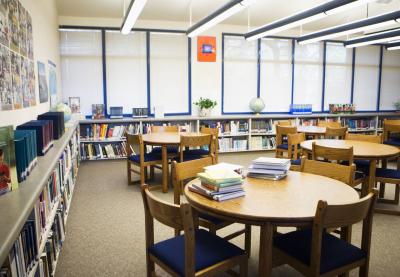How is this going to happen? Will it actually motivate them? Is there any way this will even work?
These are the questions I thought about as I tried to arrange the desks in a way that would work for the 17 students in my self-contained classroom: I was the only special education teacher in the seventh grade who taught this class. Students were placed with me for reasons that varied from a severe learning disability to ADHD; several struggled with the array of emotional issues categorized as "emotional disturbance."
I knew that many of the behavior issues I experienced with my students came from difficulties in their lives outside of school. But even if I understood some of the roots of their behavior, it's not as though I could fix them. No matter where I moved the desks, I knew they would be too close to one another in my small room.
See our Reframing Classroom Management resources for more on how to recognize and respond to student needs that show up in certain behaviors.
I sat down, looking up at the bulletin board and walls still blank after weeks of meetings and paperwork. Stapling thin yellow paper to cork board and punching out letters to create a showcase for positive behavior and accomplishments, I thought of ways I could better focus on student strengths. I was trying several new things this year, and hopefully they would help my students recognize that they already had the skills they need to be successful in school.
Earlier in the week, I had spoken with a colleague and her teaching assistant who worked with several students with severe disabilities in a trailer a short distance down the sidewalk. I told them I'd been thinking about my students and that I had an idea that helping others might make a difference in their own behavior. "Send them to me," my colleague said.
How It Worked
For many of my students, the opportunity to help others became my most coveted reward.
We picked a few days a week when only one or two students would be selected. By putting forth their best effort, following classroom rules, completing assignments, staying on task and encouraging their peers in my classroom, students worked toward this reward or others. If they'd earned the reward, at a designated time they would head down to my colleague's classroom. There, they'd help her students practice academic and daily living tasks.
Why It Worked
I watched kids lift their heads off their desks, completing their first full assignments in a long time so they could go help the students with whom they'd been matched practice greetings or learn their letters. It was clear that more of my students' needs were being met: Not only were they doing their work, but there were fewer behavior issues. They realized they knew something of value they could teach someone else. In teaching, they became motivated to enhance their own skills.
What Students Learned
Helping others with challenges greater than their own gave my students a brief glimpse of a new perspective. They learned to be more compassionate and understanding, not just with others but also with themselves. Even when something was difficult, they found, they could tackle it through hard work and perseverance.
Students who participated found more purpose in their learning. They knew that the more they learned, the more they would have to teach others. And they wanted to be on their best behavior: Their buddies were counting on them.
As students became more motivated and positive about school, their overall performance improved. Even though they were only 12 years old, my students had experienced so much of the ugly side of life that some had already given up in some ways. In helping others, I hope they found that everyone has skills and abilities that can make a difference in the world. In helping others, I hope they found ways to help themselves, too.
Parrish has been an educator for 15 years, first as a middle school special education teacher and now as an entrepreneur who started her own tutoring and supplemental education business.
